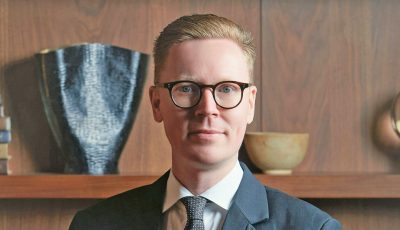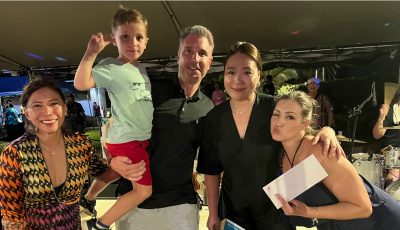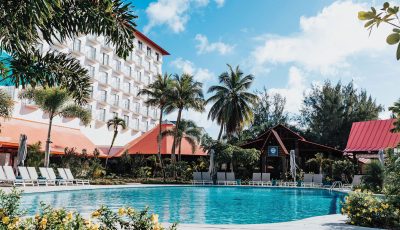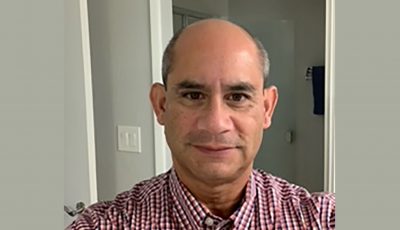Origins of giant soda pop bottles previewed at Rotary meeting
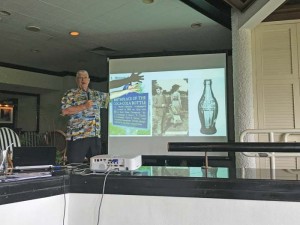
Steven R. Connor was the Rotary Club of Saipan’s guest speaker during its weekly meeting last Tuesday at the Hyatt Regency Saipan. (Mark Rabago)
Steven R. Connor, Mariana Stamp and Coin Club founder, spoke about the origins of the giant concrete Coca-Cola bottles that once littered the landscape of Saipan and Tinian during last Tuesday’s Rotary Club of Saipan meeting at the Hyatt Regency Saipan.
The presentation was a preview of the 2016 Rotarian of the Year’s talk set for today, Jan. 20, at the American Memorial Park auditorium titled “History of Coca-Cola in the Mariana Islands.”
Connor, a retired engineer and recent Saipan transplant, said his presentation is a research paper he wrote under a grant from the Northern Marianas Humanities Council.
More than anything, curiosity prompted him to do his research—someone came up to him and asked, “Where did these [concrete bottles] come from?”
“After driving by these concrete soda pop bottles on Saipan and Tinian, I recognized that they were unique…I thought these bottle advertisements to celebrate successful American industry would not be considered with just a little respect and/or consideration of the truth. So, I sought out a way to understand for myself and increase awareness of others about these concrete bottles,” he said.
Connor said the giant concrete soda bottles, which includes the Sprite and Fanta brands, were first shipped from Macau to Saipan by Chinese businessman Timothy Lee Po Tin in the 1970s. Lee took over Coca-Cola’s bottling operations on the island and it became the hub of the iconic soda brand in Micronesia.
Lee’s company proceeded to import these typhoon-proof concrete soda pop bottle advertising behemoths—20 in all—and planted them in strategic places on Saipan and neighboring Tinian.
Of the original 20, only 13 remain—nine on Saipan, one on Tinian, with three “rescued” from demolition and shipped to Guam.
Of the remaining structures on Saipan, one is at the Subway location at the Paseo de Marianas, one in front of a commercial complex near T Galleria in Garapan (painted to match the building’s color), two at Coca-Cola’s warehouse and main office in Gualo Rai, three in front of Joeten Dandan, one on Tinian along Broadway, and two in “storage” at the back of the Coca-Cola warehouse along Middle Road.
The Garapan Roundhouse, the present Cargo Express facility in Lower Base, and the Galaxy snack bar near Northern Marianas College also used to host these giant soda pop bottles.
The three in Guam can be found at the Coca-Cola distribution plant, at the Guam Football Association, and in front of the Subway restaurant in Tumon.
Connor’s presentation, “History of Coca-Cola in the Mariana Islands,” will be from 6pm to 7pm at the AMP auditorium and admission is free.



